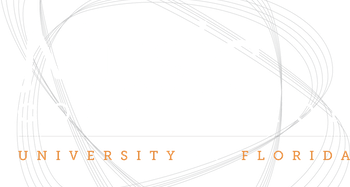|
MUC4313/5315 Small Project No. 2
REMEMBER: Follow all procedures as outlined in the web handouts "Getting Started" and "Small Project No. 1."
In this project, the student will modify or create an original sound/patch using a software synthesizer. Our goal is to understand the function of standard synthesizer parameters. Reason by Propellerheads will be this project's main tool due to its very flexible design. There are remarkable similarities between each synthesis system. Below are some standard parameters you can find in synthesizer patches. Please review the terms before you begin. To use synthesizers, it is critical to understand the signal flow paradigm.
Phase: How does the change of phase affect the sound? LFO: What is its function? What is the difference between a standard oscillator and an LFO? Envelope: Where can you apply an envelope? What does ADSR stand for? Filter: Learn differences between LP, HP, BR, and BP filters. Polyphony/ Portamento/ Legato: What are the differences? MIDI Terms: Learn about velocity, modulation wheel, pitch band, after touch, continuous controllers, etc
Delay: Understaind delay times and feedback. Compression/Limiter: What is the difference between compression/limiter/normalization. EQ: Is an EQ a filter?
Operating Reason
Click on Reason at the Dock. You should have a blank rack. If you see a bunch of sound modules in demo mode, turn them off (Reason->Preferences->General->Default Song->Empty Rack). Notice it's very similar to the MIDI synth rack in the studio. Reason is designed to simulate the racks. Press
Step 2. Create Mixer and Synthesizer channels or more. Go to
After a mixer is created, go to
If all the setups are right, you should hear a sound when you input a note or click on the keyboard in the sequencer view. Step 3. Tweak the Synth
Subtractor One of the best ways to learn to make patch is "tweaking" the presets.
1.Open each module's presets by clicking the folder icon. Choose one you
would like study. Move the knobs and see what is changing the
parameters. Once you get the sense of the internal structure of Subtractor, try to build your own synth from the scratch. Don't try to make a "cool" sound by blindly tweaking the knobs. Know what you are doing. Familiarize yourself with each parameter's effect on the sound.
Malstrom Step 4. Add Effects If you go to the Create menu, the whole second and third section consist of signal processors. Use any of the signal processors to enhance your sound. Here are some tips
1. Just like the case of the Subtractor/Malstrom synthesizers, try to
understand what is going on when a parameter is changed. Again, it is crucial to understand the signal flow concept. Some of the modules might have CV (control voltage) input/output. Know the difference between audio signal and control signal. Try patching different control signals to the control inputs "behind the rack".
Step 5. Saving and Sampling the Patch
1.Make some notes on the sequencer. Make sure you choose your output
device correctly (in this case, Subtractor) and input some notes. You
can either "draw" the notes in a similar way you did with Project 1, or
you can press the record button and play the keyboard.
When you turn in the audio excerpt for the Project 2, please try to be musical. It can be as short as 10-20 seconds of a musical moment, or it can be a short composition. It all depends on the patches you are making.
You are asked to turn in both .rex file and the audio excerpt to see Analog (or analog modeling) synthesizers are still popular among electronic musicians. The concepts and terms you'll learn in this project (eg: envelope, filtering, LFO, etc) will be applied to any synthesis technique. The signal processor scheme will come back in the next project in the form of Pro-Tools TDM Plug-Ins. Welcome to the world of sound design!
-10/25/03 |
- last update 3 September 2010 -
